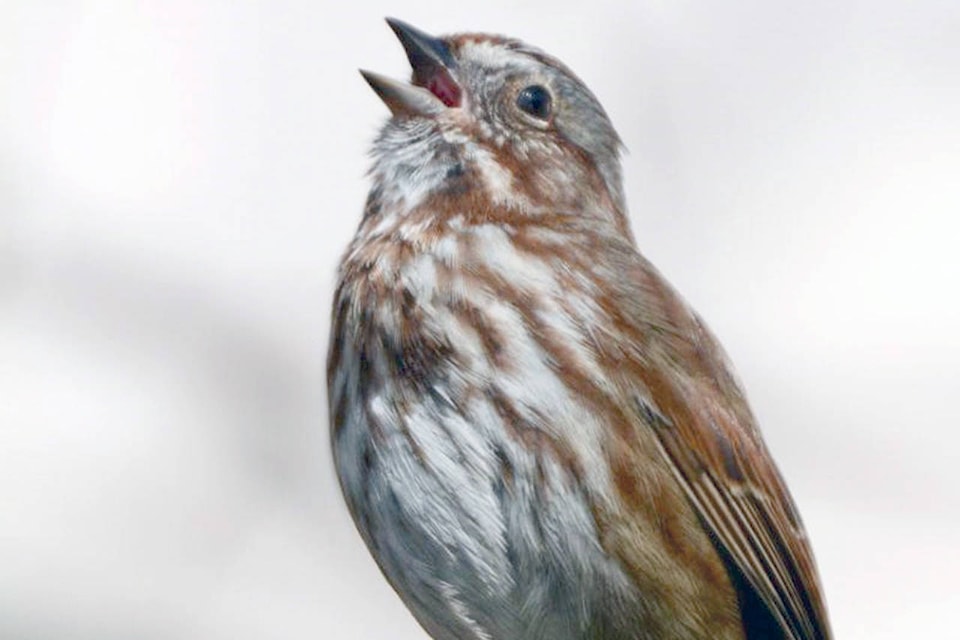Suddenly a sparrow lands at my feet and then, without any obvious anxiety, proceeds to peck at tiny seedlings on my deck flooring.
It’s 5:45 in the morning and the sky is slightly pale, although the sun is about to peek over the mountains across the valley. As I gaze more closely, I recognize the brown feathered creature as a chipping sparrow.
Because I talk to animals, eventually I said “hello, little fellow.” And with a friendly “chip, chip” it flew across the backyard garden and disappeared into some far-off bushes. I knew it had a nest there (or recently had one), but I decided that as a fellow traveller on this planet of ours, it needed privacy. So I never checked on the nest, never looked upon the tiny speckled green eggs.
I have taken a live-and-let-live position in reference to bird-life and other wild things in my small domain. It’s their domain, too, because they’re at home in the trees, in the grass, and among the flowers. They function in this environment better than I ever could. All I ever do is mow and clip away aspects of their surroundings.
Other fellow travellers include many robins. These birds nest mostly in the crooks of tree branches and can be seen flying back and forth carrying bits of grass, string, and dabs of mud. Unfortunately, large black travellers known as crows often arrive and plunder the robins’ first nests. I’m not happy about these dark wayfarers, but the robins soon build anew and eventually grow a family.
One year a mother robin decided that a ledge under my deck would be a good protected area for her young, but she still must have been unsure. She built eight nests on this long ledge before settling on one of the nests to lay her eggs. Despite all her precautions, the crows still managed to carry off her young at the fledgling stage.
The more I pay attention to birds the more I realize their behaviors are no different than ours. Recently, a female red-shafted flicker seemed to have lost its mate and/or its young. It spent several days flying aimlessly in great arcing swoops from one tall tree in my neighbour’s yard to another gigantic tree in my yard. As it landed, it began its plaintive cry, a shrieking noise like a human who has suffered immense loss.
After I’ve watered my lawn, I notice the arrival of robins and watch them trace patterns across the lawn’s surface. A little run, a moment to listen intently, another ramble, and then a beak thrust into the soft earth seeking earthworms. These worms (other creatures at home on this planet of ours) move nearer the surface after a heavy watering, and the robins cash in.
I’ve watched the mating rituals of robins, of flickers, of chickadees, of sparrows, and of yellow warblers. I’ve watched the stellar jays parade around my yard in the early spring and, at that time, heard them making a lot of cackling- type noise. But they soon disappear into my neighbour’s huge cedar trees and rarely appear all summer long.
I love spending time on this earth with the yellow warblers. They’re quite colourful and their songs are ever so melodic and cheerful that they disperse any level of depression or angst I’ve been feeling.
The antics of these birds are better than any pills I could ever take. I respect their right as passengers on this planet to live side by side with me — just like the Eastern Phoebes that have nested under our deck for the past six years.
